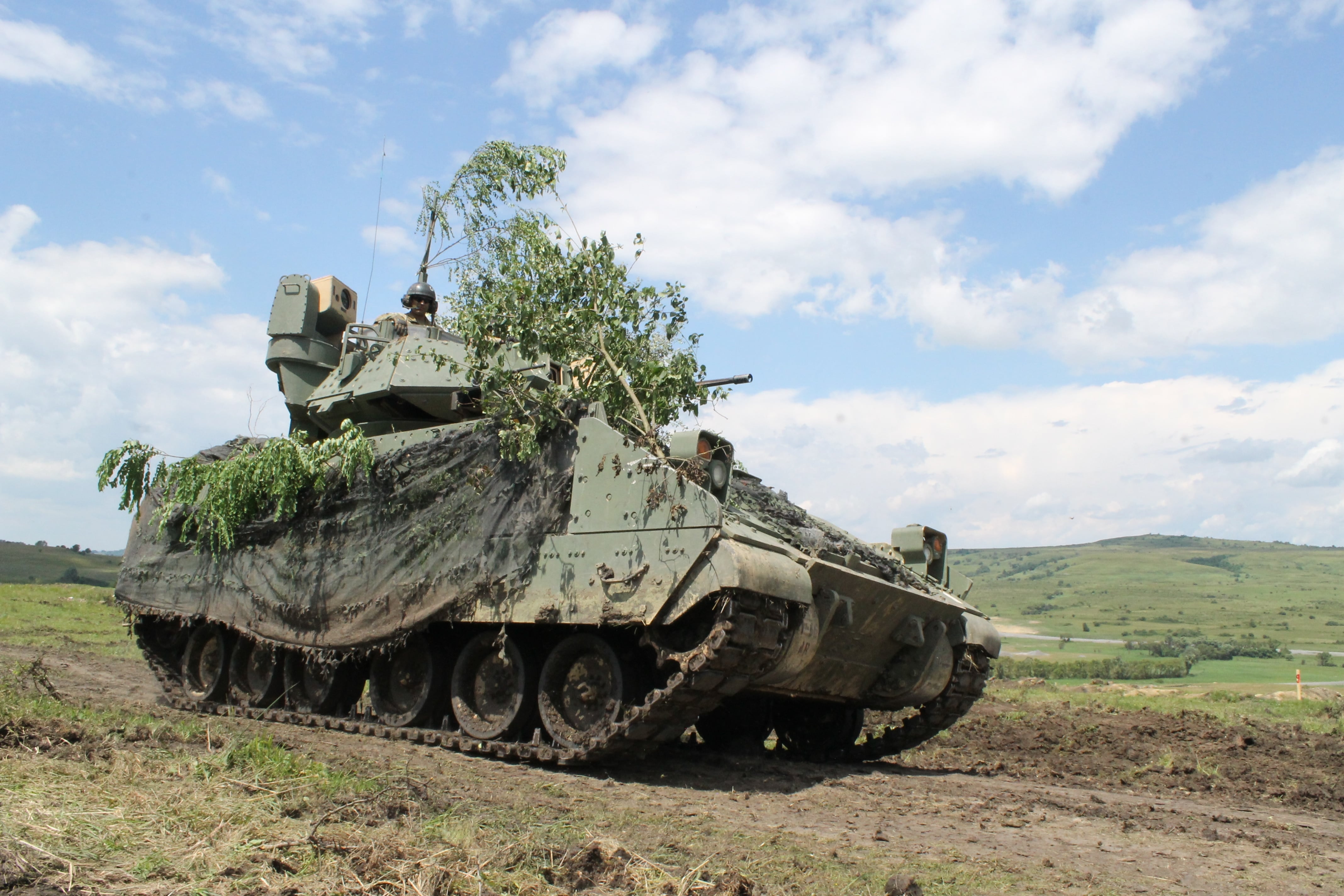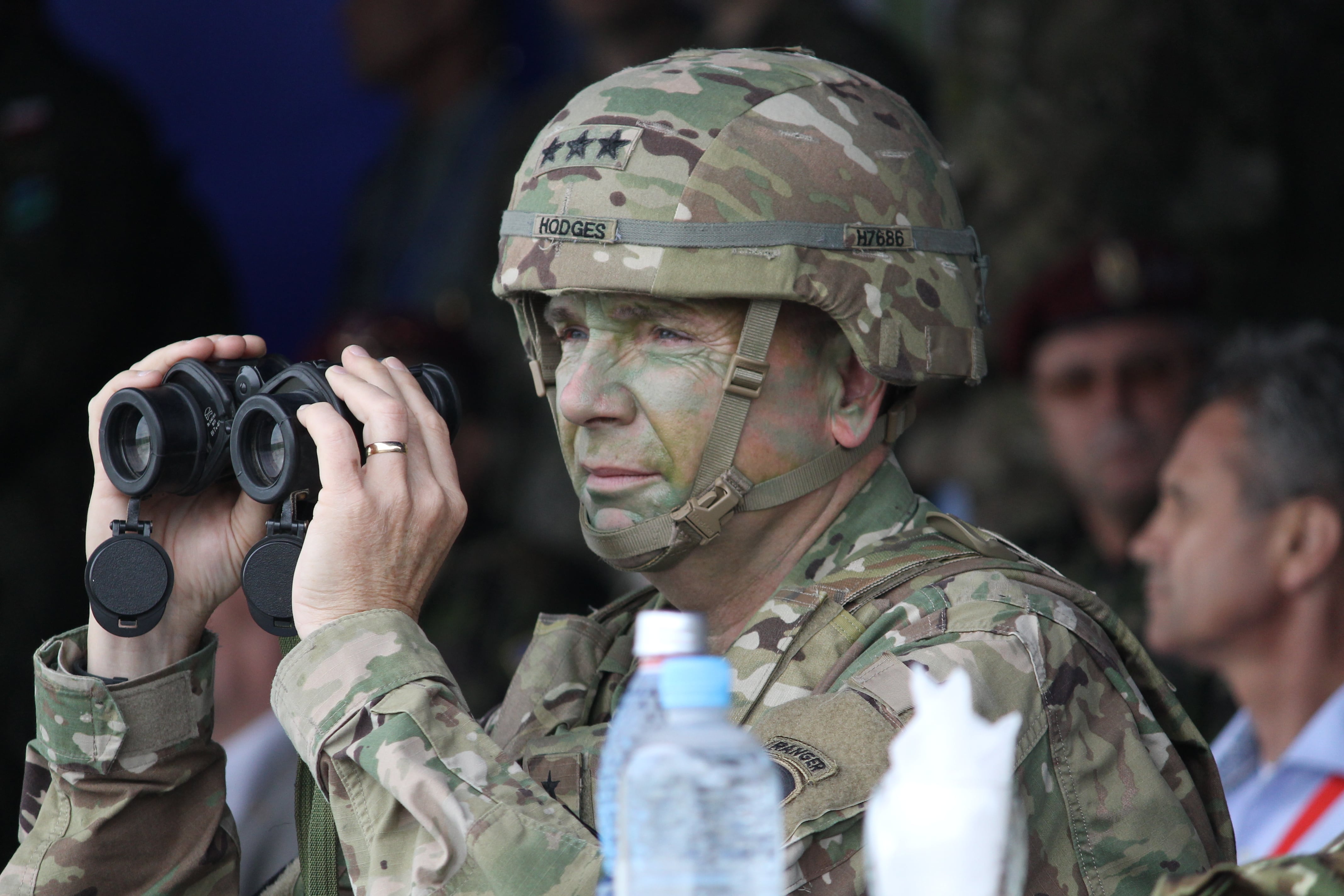PARIS — New legislation in the Senate version of the fiscal 2019 authorization bill attempts to get answers from the Pentagon on whether it makes more sense to permanently station U.S. troops in Europe or continue to use heel-to-toe rotational units to deter Russian aggression on the eastern flank.
When asked at the recent Eurosatory defense trade show what makes the most sense on the European continent, the new U.S. Army Europe commander indicated the answer is not so black and white. Basically, “it completely depends,” he said.
“It completely depends on the theater and it completely depends on the threat perceived in that theater,” Lt. Gen. Christopher Cavoli told a small group of reporters at the conference.
“In Europe, it’s challenging,” he said, because there are different views of how serious the threat is and where that threat may grow.
“So you have to not set yourself up to be a one-trick pony; you have to set yourself up to be flexible,” he said.
Cavoli noted there are permanently stationed units in Europe like the 2nd Cavalry Regiment and the 173rd Airborne Brigade. But the Army has been deploying into Europe on a rotational basis armored brigade combat teams for several years.
Now, retired Lt. Gen. Ben Hodges, Cavoli’s predecessor as U.S. Army Europe commander, has been a vocal proponent for rotational ABCTs. He said at Eurosatory that “we get more strategic value out of rotational forces because when that brigade comes over for nine months, it’s like they are in the field for nine months.”
The ABCT receives three times more gunnery training than it would in a year stateside, which means it achieves a higher level of readiness and contributes to refining agile and rapid movement around the eastern flank, Hodges noted.
RELATED

The Senate Armed Services Committee’s defense authorization bill includes a request for a review examining the rotational presence of the American ABCT in Europe to a forward-stationed ABCT.
“There is a lot that goes into the answer to that question,” Cavoli said. “The first thing is it depends on what we think of the imminence of the threat that can be countered with a brigade combat team. I don’t think there is unanimity about the imminence of such a threat.”
“There is a large international and diplomatic component to the question. You are talking about stationing large forces in someone else’s country, so ultimately such decisions get made based on political considerations,” which, Cavoli added, is far above his paygrade.
Yet, Cavoli noted, that there are some forces and some specialties that have to be forward-assigned on a permanent basis if the Army is to be effective. Those specialties include intelligence, logistics and networking capabilities.
And there are other forces that can be useful on a rotational basis, he said, and there are forces that need to be episodically rotated into theater for large demonstrations or messaging purposes.
RELATED

Even more importantly, Cavoli stressed, is how forces are able to move across Europe, where speed of recognition, decision and response is crucial to deter threats that may emerge.
“Where do they need to be? They need to be where my force is most agile,” Cavoli said. “That is, I don’t need them overly committed to one thing or the other because we have a 360-degree assessment of the threat, and that could be said almost geographically as well, so it would not contribute to operational agility if they were all to be committed to one place or the other. They have to be places where they can move quickly.”
But that may prove easier said than done.
“We deliver heavy equipment on the battlefield on the back of heavy equipment transport trucks, rail cars ― both of those are in short supply in Europe across the alliance,” he said, referring to NATO.
The Army has been working over the past several years to improve freedom of movement and agility of large, heavy units across Europe by trying to improve infrastructure like rail lines, roads, bridges, bridging and transport capabilities, and processes at borders.
Jen Judson is an award-winning journalist covering land warfare for Defense News. She has also worked for Politico and Inside Defense. She holds a Master of Science degree in journalism from Boston University and a Bachelor of Arts degree from Kenyon College.







